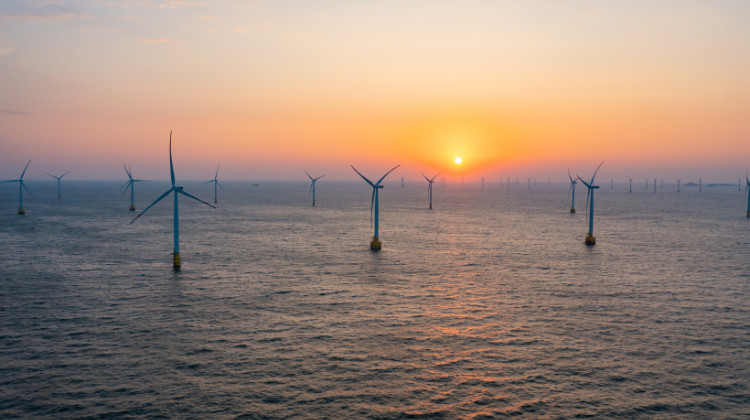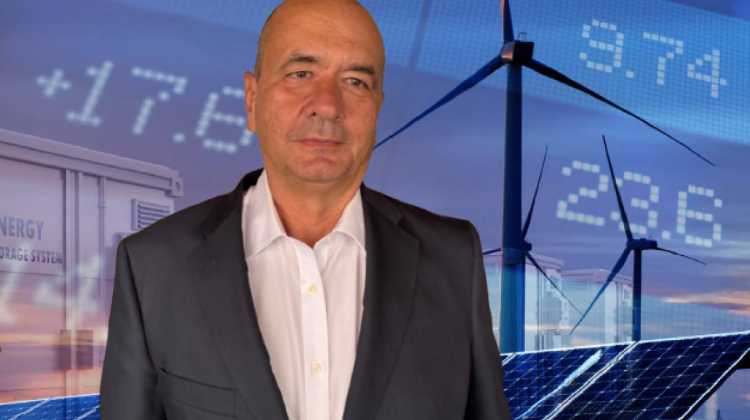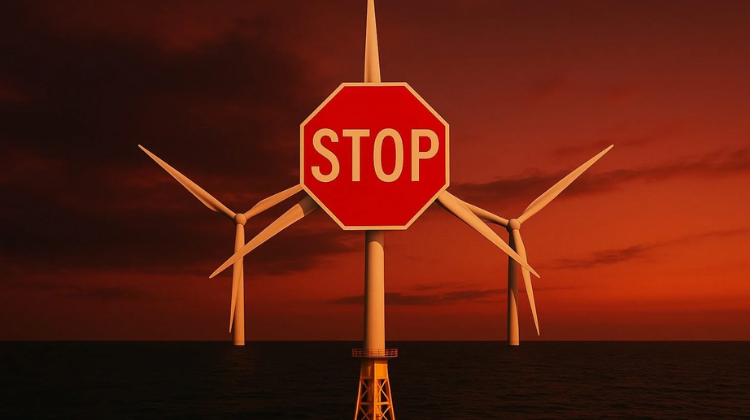The framework guides the approval process for Member State Aid applications, which are subject to approval from the European Commission. The new rules are in force from today until 31 December 2030.


The framework guides the approval process for Member State Aid applications, which are subject to approval from the European Commission. The new rules are in force from today until 31 December 2030.

New strategy sets out 2025–2026 roadmap to transform Wales into a clean energy and industrial powerhouse, backed by industry leaders.

New data reveals residential systems make up 80% of national capacity, but utility-scale projects are poised to take the lead.

Industry now supports nearly 2,000 companies and over 55,000 jobs as wind power surpasses gas in UK electricity generation.

Closure marks a major step in Ireland’s clean energy journey as Moneypoint prepares for a low-carbon future.

The Federal Network Agency has awarded the N-9.4 area in the North Sea to North Sea OFW One GmbH, a subsidiary of TotalEnergies, for €180 million. The industry warns of mounting financial and technical risks in such developments.

Balcony power plants are transforming cityscapes, enabling renters and apartment dwellers to actively participate in the energy transition. With over a million systems now installed, plug-in solar is proving to be a scalable, affordable solution for decentralizing electricity production and lowering household energy costs.

In 2024, renewable energy accounted for 19.8% of the Netherlands’ total energy consumption, driven by offshore wind expansion and higher use of biofuels. The figure marks more than double the share recorded in 2019, according to the Dutch Central Bureau of Statistics (CBS).

While Scotland projects 45 GW of offshore wind capacity by 2035, the updated SMP-OWE still falls short of addressing key bottlenecks in transmission, permitting, and supply chain development. “What builds confidence isn’t another map – it’s a connected system,” states John MacAskill, Managing Director of Renewables at ABL Group, to Strategic Energy Europe.

During the Storage, Renewable and EV Integration Forum, Daniel Fraile, Chief Policy Officer at Hydrogen Europe, highlighted a 44% compound annual growth in new green hydrogen projects and a pipeline under construction nearing 3 GW. However, he acknowledged that progress “is not what was expected a few years ago.” He pointed to regulatory bottlenecks, called for technological neutrality, and urged faster permitting and grid access.

Scotland’s Energy Minister has announced the update of the Sectoral Marine Plan, unlocking over 45 GW of offshore wind capacity by 2035, boosting the blue economy, technological innovation, and decarbonisation of the North Sea.

The United Kingdom has reached 17,781 MW of installed solar PV capacity as of April 2025, with more than 70% concentrated in England. Falling costs and the growth of residential installations are driving expansion, while Scotland and Wales are experiencing a slower pace.

Jacopo Tosoni, Head of Policy at the European Association for Storage of Energy (EASE), warns that the energy storage industry will experience a qualitative leap in 2026, with an expansion that will triple current levels. He made this statement at the Storage, Renewable and EV Integration Forum, organized by Strategic Energy Europe. He also highlighted regulatory, fiscal and technical bottlenecks that are still hindering the sector’s growth.

With barely a year in the European market, CLOU has already secured contracts for 240 MWh in Poland and 96 MWh in Greece. Its strategy centers on storage solutions for Utility Scale and the Commercial & Industrial (C&I) markets, with special focus on four key regions: the United Kingdom, Germany, Poland, and Spain. “The recent blackout was the missing signal to fully commit to energy storage,” emphasizes Hayat Kebir Tio, General Manager for the EU and UK.

According to the latest report from international consultancy Wood Mackenzie, “Horizons – May 2025,” escalating trade tensions may significantly disrupt supply chains, increase project costs, and delay the energy transition just as the sector reaches a critical phase of expansion.

Wind Energy Ireland warns that the country is at risk of missing its window of opportunity to develop a competitive offshore wind industry. The plan, launched at the Offshore Wind Conference 2025, demands immediate political leadership and coordinated action to advance key projects, ports and energy infrastructure.

The UK Department for Energy Security and Net Zero (DESNZ) has confirmed that Allocation Round 7 (AR7) of the CfD scheme will open for applications in August, with results anticipated between late 2025 and early 2026. The process outlines five potential timeline scenarios depending on applicant appeals, and introduces key reforms for fixed-bottom offshore wind projects without planning consent.

The Federal Network Agency has opened the process to allocate 2,266,466 kW in solar projects. The ceiling price is set at €0.068/kWh. Several key reforms under the Solar Package I still require state aid approval from the European Commission.

As Europe accelerates its transition to renewable energy, a new player is emerging with a bold vision and a unique European footprint. Maxxen Energy, a company born from Swiss precision, European quality, and the Turkish industrial edge, is redefining what it means to manufacture energy storage solutions — close to the market, built for performance, and engineered for resilience.

The Commission’s assessment shows that the EU is currently on course to reduce net GHG emissions by around 54% by 2030, compared to 1990 levels, if Member States implement fully existing and planned national measures and EU policies. In the current geopolitical context, this demonstrates that the EU is staying the course on its climate commitments, investing with determination in the clean energy transition and prioritising the EU’s industrial competitiveness and the social dimension.

With improvements in terrain adaptability, assembly optimization, and SmartSlope technology, the Spanish company is committed to leading the European market with customized technical solutions. “We listen to our customers to adapt to each project,” emphasizes Fernando Mico, Chief Business Development Officer of Solar Steel.

The framework guides the approval process for Member State Aid applications, which are subject to approval from the European Commission. The new rules are in force from today until 31 December 2030.

New strategy sets out 2025–2026 roadmap to transform Wales into a clean energy and industrial powerhouse, backed by industry leaders.

New data reveals residential systems make up 80% of national capacity, but utility-scale projects are poised to take the lead.

Industry now supports nearly 2,000 companies and over 55,000 jobs as wind power surpasses gas in UK electricity generation.

Closure marks a major step in Ireland’s clean energy journey as Moneypoint prepares for a low-carbon future.

The Federal Network Agency has awarded the N-9.4 area in the North Sea to North Sea OFW One GmbH, a subsidiary of TotalEnergies, for €180 million. The industry warns of mounting financial and technical risks in such developments.

Balcony power plants are transforming cityscapes, enabling renters and apartment dwellers to actively participate in the energy transition. With over a million systems now installed, plug-in solar is proving to be a scalable, affordable solution for decentralizing electricity production and lowering household energy costs.

In 2024, renewable energy accounted for 19.8% of the Netherlands’ total energy consumption, driven by offshore wind expansion and higher use of biofuels. The figure marks more than double the share recorded in 2019, according to the Dutch Central Bureau of Statistics (CBS).

While Scotland projects 45 GW of offshore wind capacity by 2035, the updated SMP-OWE still falls short of addressing key bottlenecks in transmission, permitting, and supply chain development. “What builds confidence isn’t another map – it’s a connected system,” states John MacAskill, Managing Director of Renewables at ABL Group, to Strategic Energy Europe.

During the Storage, Renewable and EV Integration Forum, Daniel Fraile, Chief Policy Officer at Hydrogen Europe, highlighted a 44% compound annual growth in new green hydrogen projects and a pipeline under construction nearing 3 GW. However, he acknowledged that progress “is not what was expected a few years ago.” He pointed to regulatory bottlenecks, called for technological neutrality, and urged faster permitting and grid access.

Scotland’s Energy Minister has announced the update of the Sectoral Marine Plan, unlocking over 45 GW of offshore wind capacity by 2035, boosting the blue economy, technological innovation, and decarbonisation of the North Sea.

The United Kingdom has reached 17,781 MW of installed solar PV capacity as of April 2025, with more than 70% concentrated in England. Falling costs and the growth of residential installations are driving expansion, while Scotland and Wales are experiencing a slower pace.

Jacopo Tosoni, Head of Policy at the European Association for Storage of Energy (EASE), warns that the energy storage industry will experience a qualitative leap in 2026, with an expansion that will triple current levels. He made this statement at the Storage, Renewable and EV Integration Forum, organized by Strategic Energy Europe. He also highlighted regulatory, fiscal and technical bottlenecks that are still hindering the sector’s growth.

With barely a year in the European market, CLOU has already secured contracts for 240 MWh in Poland and 96 MWh in Greece. Its strategy centers on storage solutions for Utility Scale and the Commercial & Industrial (C&I) markets, with special focus on four key regions: the United Kingdom, Germany, Poland, and Spain. “The recent blackout was the missing signal to fully commit to energy storage,” emphasizes Hayat Kebir Tio, General Manager for the EU and UK.

According to the latest report from international consultancy Wood Mackenzie, “Horizons – May 2025,” escalating trade tensions may significantly disrupt supply chains, increase project costs, and delay the energy transition just as the sector reaches a critical phase of expansion.

Wind Energy Ireland warns that the country is at risk of missing its window of opportunity to develop a competitive offshore wind industry. The plan, launched at the Offshore Wind Conference 2025, demands immediate political leadership and coordinated action to advance key projects, ports and energy infrastructure.

The UK Department for Energy Security and Net Zero (DESNZ) has confirmed that Allocation Round 7 (AR7) of the CfD scheme will open for applications in August, with results anticipated between late 2025 and early 2026. The process outlines five potential timeline scenarios depending on applicant appeals, and introduces key reforms for fixed-bottom offshore wind projects without planning consent.

The Federal Network Agency has opened the process to allocate 2,266,466 kW in solar projects. The ceiling price is set at €0.068/kWh. Several key reforms under the Solar Package I still require state aid approval from the European Commission.

As Europe accelerates its transition to renewable energy, a new player is emerging with a bold vision and a unique European footprint. Maxxen Energy, a company born from Swiss precision, European quality, and the Turkish industrial edge, is redefining what it means to manufacture energy storage solutions — close to the market, built for performance, and engineered for resilience.

The Commission’s assessment shows that the EU is currently on course to reduce net GHG emissions by around 54% by 2030, compared to 1990 levels, if Member States implement fully existing and planned national measures and EU policies. In the current geopolitical context, this demonstrates that the EU is staying the course on its climate commitments, investing with determination in the clean energy transition and prioritising the EU’s industrial competitiveness and the social dimension.

With improvements in terrain adaptability, assembly optimization, and SmartSlope technology, the Spanish company is committed to leading the European market with customized technical solutions. “We listen to our customers to adapt to each project,” emphasizes Fernando Mico, Chief Business Development Officer of Solar Steel.

En entrevista con Strategic Energy Europe, Antonio Delgado Rigal, CEO de AleaSoft, explica cómo el contexto está forzando a redefinir los modelos de negocio y a buscar rentabilidad en la hibridación, los PPAs con precios mínimos y la gestión inteligente del riesgo.

El revés judicial se basó en la obligatoriedad de tramitar el proyecto junto con su línea de evacuación pese a que cuando inició el permitting esta norma no existía. ¿Qué ha ocurrido en estos tres años de presión que retienen cerca de 2 GW de potencia?

The judicial setback was based on the obligation to process the wind project together with its grid connection line, even though this requirement did not exist when the permitting process began. What has happened during these three years of pressure that have kept around 2 GW of capacity on hold?






